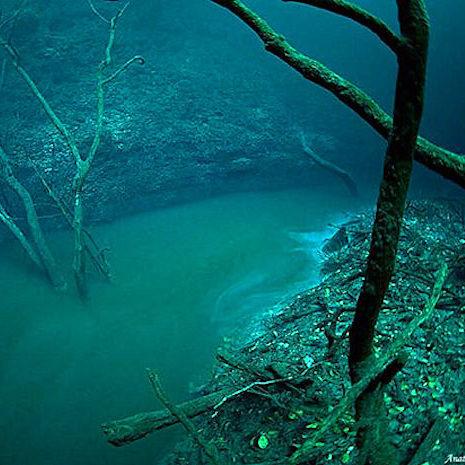CENOTES
CENOTES
A “cenote” is a natural pit, or sinkhole resulting from the collapse of limestone bedrock that exposes groundwater underneath. Especially associated with the Yucatán Peninsula of Mexico, cenotes were used by the ancient Maya for sacrificial offerings.
The term derives from a word used by the low land Yucatec Maya, “Ts’onot” to refer to any location with accessible groundwater. Cenotes are common geological forms in low latitude regions, particularly on islands, coastlines, and platforms with young post-Paleozoic limestones that have little soil development.
Cenotes are surface connections to subterranean water bodies. While the best-known cenotes are large open water pools measuring tens of meters in diameter, the greatest number of cenotes are smaller sheltered sites and do not necessarily have any surface exposed water.
The water is often very clear, as it comes from rain filtering slowly through the ground.
Cenotes around the world attract cave divers who have documented extensive flooded cave systems through them, some of which have been explored for lengths of more than 100 km (62 mi).
Cenotes are formed by dissolution of rock and the resulting subsurface void, which may or may not be linked to an active cave system.
Where a cenote, or the flooded cave to which it is an opening, provides deep enough access into the aquifer, the interface, called halocline, between the fresh and saline water may be reached, which means a sharp change in salt concentration over a small change in depth.
The Yucatán Peninsula has almost no rivers and only a few lakes, and those are often marshy. The widely distributed cenotes are the only perennial source of potable water of the Yucatán Peninsula.
EXCURSIONS
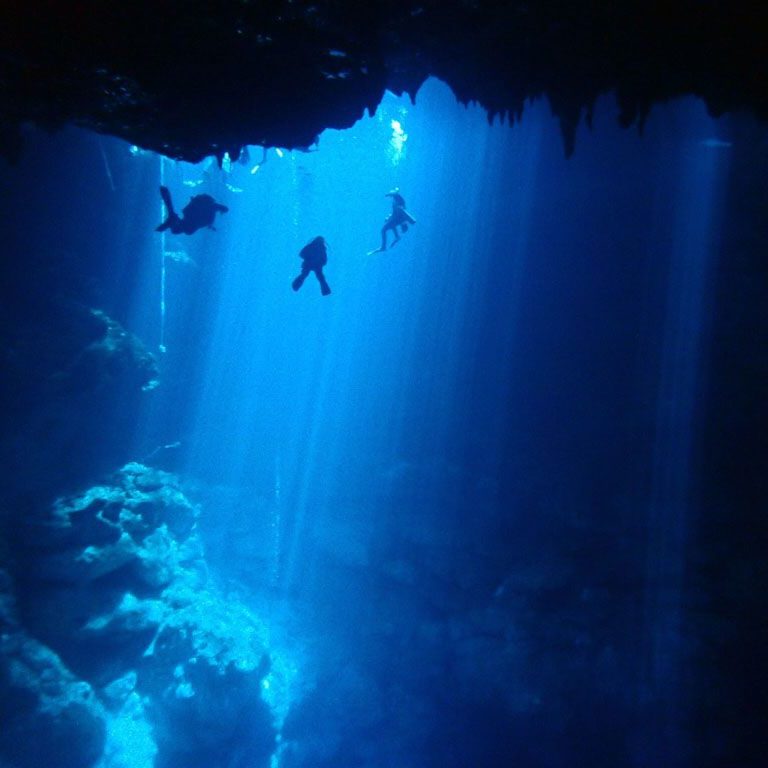
THE PIT
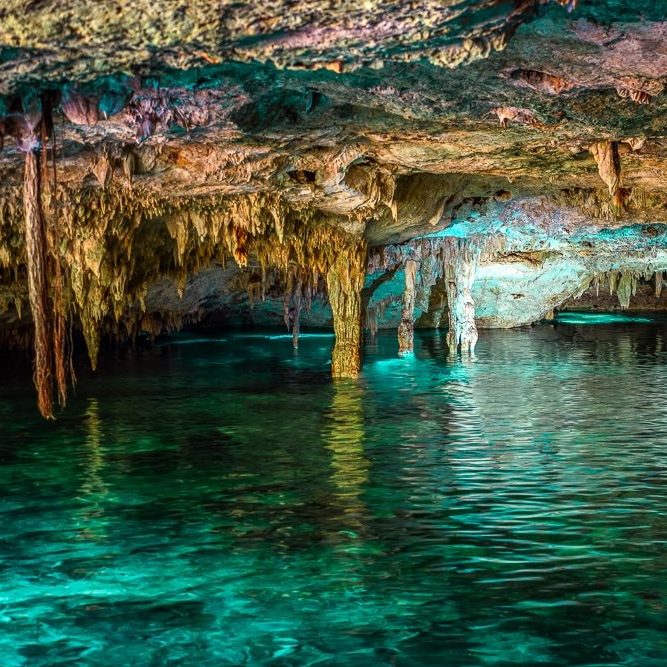
DOS OJOS
South-east from the “Pit”, Dos Ojos means “two eyes” and describe this magic cenotes that are a little different from the usual ones. It’s a two shallow dives (10-12 m/ 33-40 ft), perfect to be combined with a morning deep dive in the Pit.
Two cavern dive there are possible, both circuits (Bath Cave & Barbie line).
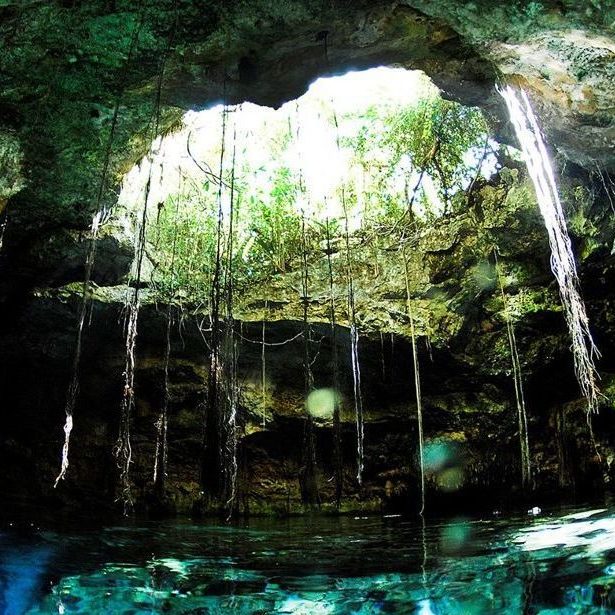
TAJ MA HA
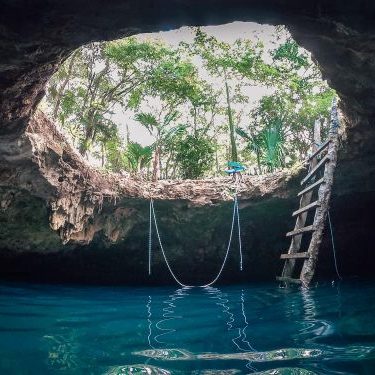
CENOTE CALAVERA
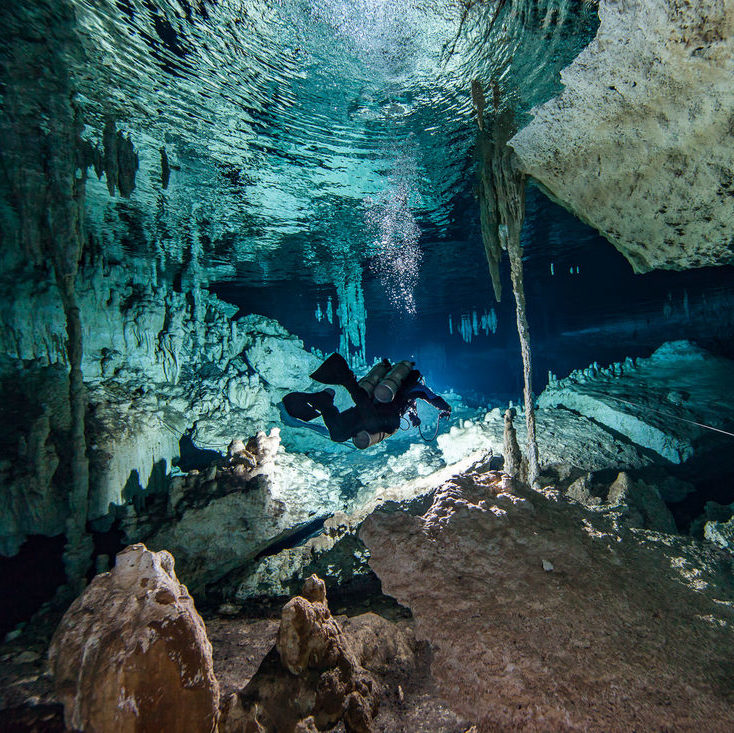
NOHOCH NAH CHICH
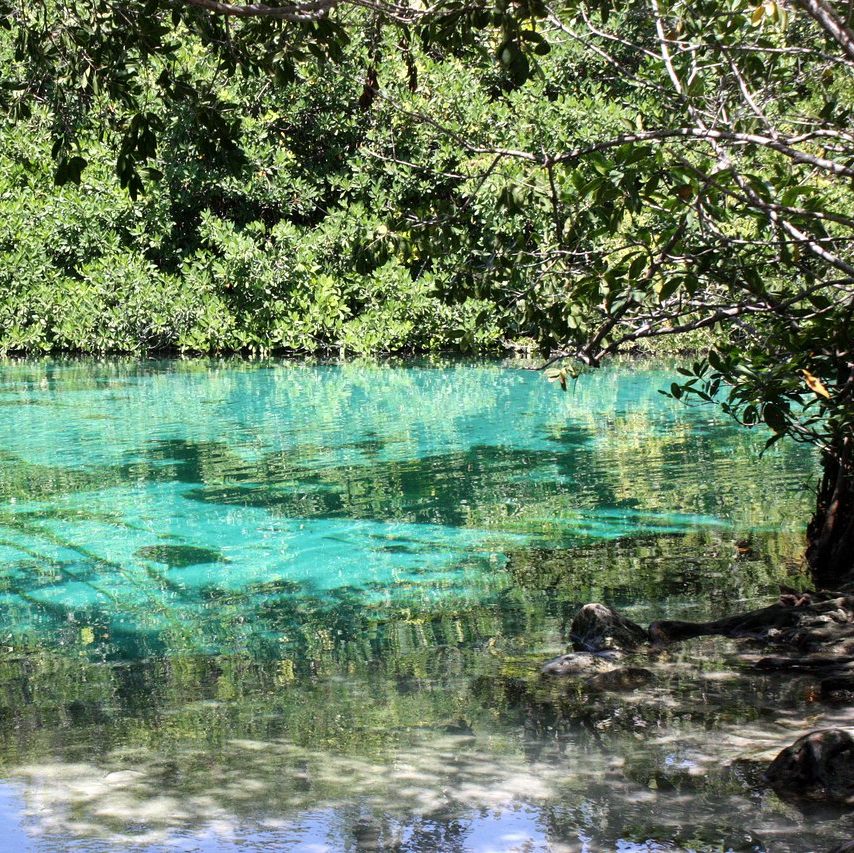
CASA CENOTE
CSouth of the dive centre, on the sea side, Casa Cenote is really different with a mangroves surrounding. It is closely connected to the sea, the exit of the fresh water comes from “Nohoch Nah Chich”, part of the “Sac Actun” system (the second longest underwater cave system). This dive is something really particular. The mix of fresh and salt water creates a magic senario, and the many mangroves passages make the diver feel exploring the jungle underwater. The big open water area is ideal for courses. There lives Poncho the crocodile who you might see sometimes chilling around.

EL EDEN
